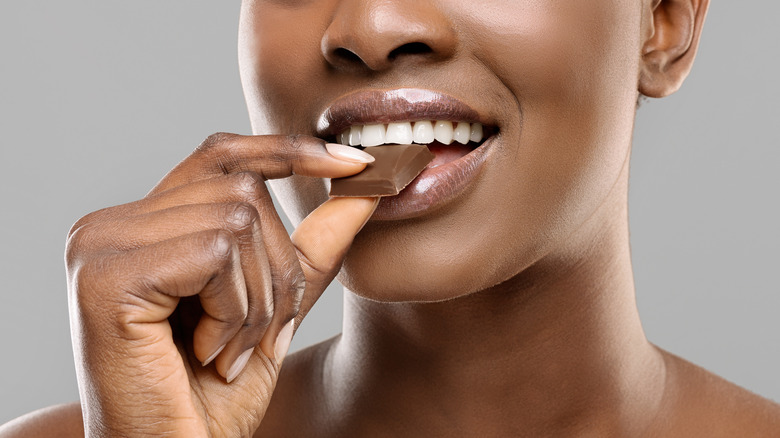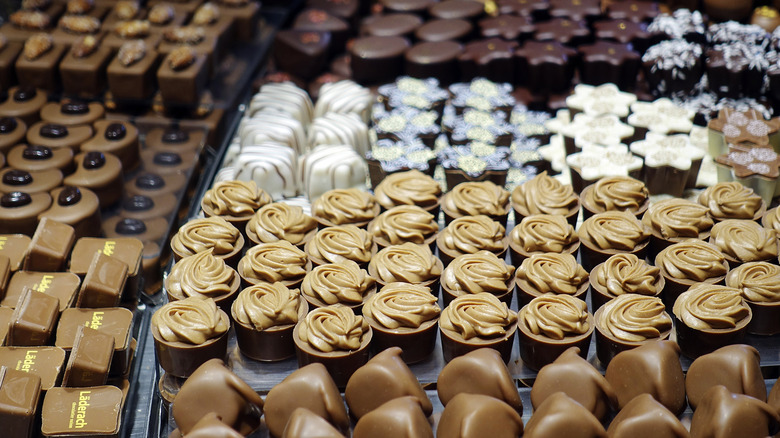Important Tips For Tasting Chocolate
Your mission, should you choose to accept it, is to taste chocolate for a living. It sounds too good to be true, right? It's not. Professional chocolate tasting is a real thing with real standards. And it's surprisingly exacting, similar in process to wine tasting. Fortunato No. 4, the Peruvian brand Swiss pastry chef Roger von Rotz once called "the Rolex of chocolate," offered a peek into the steps involved in professional chocolate tasting, a structured process designed to incorporate all five senses.
The first step is to prepare your palate. The most common method is to simply take a sip of water and swirl it around in your mouth, but Alex Rast, a chocolate expert and member of the International Chocolate Awards grand jury, told The Globe and Mail that just water doesn't cut it in professional circles. Instead, jurors swill watery, unseasoned polenta to fully clear oils between tastings.
In fact, that's exactly the kind of less-than-glamorous detail professional chocolate taster Orietta Gianjorio shared with Reader's Digest when asked to describe her job. "People's faces light up when I say I taste chocolate for a living, but it's not always delicious," Gianjorio said. "I also have to taste defective chocolate, which might have a bitter or burned flavor. I'm usually in a small room, not allowed to talk, and parked in front of a computer to log information." We don't know about you, but all of a sudden this professional chocolate-tasting gig is looking less appealing.
Let's skip to the good part
Professional chocolate tasting may not be the sweetest job, but that doesn't mean it can't be fun. Especially if we take a few tips from the experts and apply them in a party atmosphere. After cleansing your palate, Fortunato No. 4 recommends taking a good look at the chocolate, paying particular attention to color (an indicator of cacao percentage and origin).
Then prepare to smell it by rubbing the chocolate between your thumb and forefinger to release the scent. Aroma plays a key role in how we experience flavor. Finally, it's time to taste, but not so fast. Place the chocolate in your mouth and let it begin to melt. Pay attention to nuances. As you swallow the chocolate, note how it feels in your mouth. Is there an aftertaste?
According to Ghirardelli, no two people will ever have the exact same experience even when they're tasting the exact same chocolate. And there's no right or wrong conclusion, which is what makes chocolate tasting a fun group activity. In fact, Ghirardelli goes so far as to encourage chocolate lovers to make their own rules for social tastings.
Choose to focus on a variety of chocolate from a single brand or pick one kind of chocolate and compare samples from around the world. You may even want to consider a chocolate tasting kit. The Globe and Mail mentions The Chocolate Tasting Kit by Eagranie Yuh, an interactive guide with flashcards and tasting notepads.

